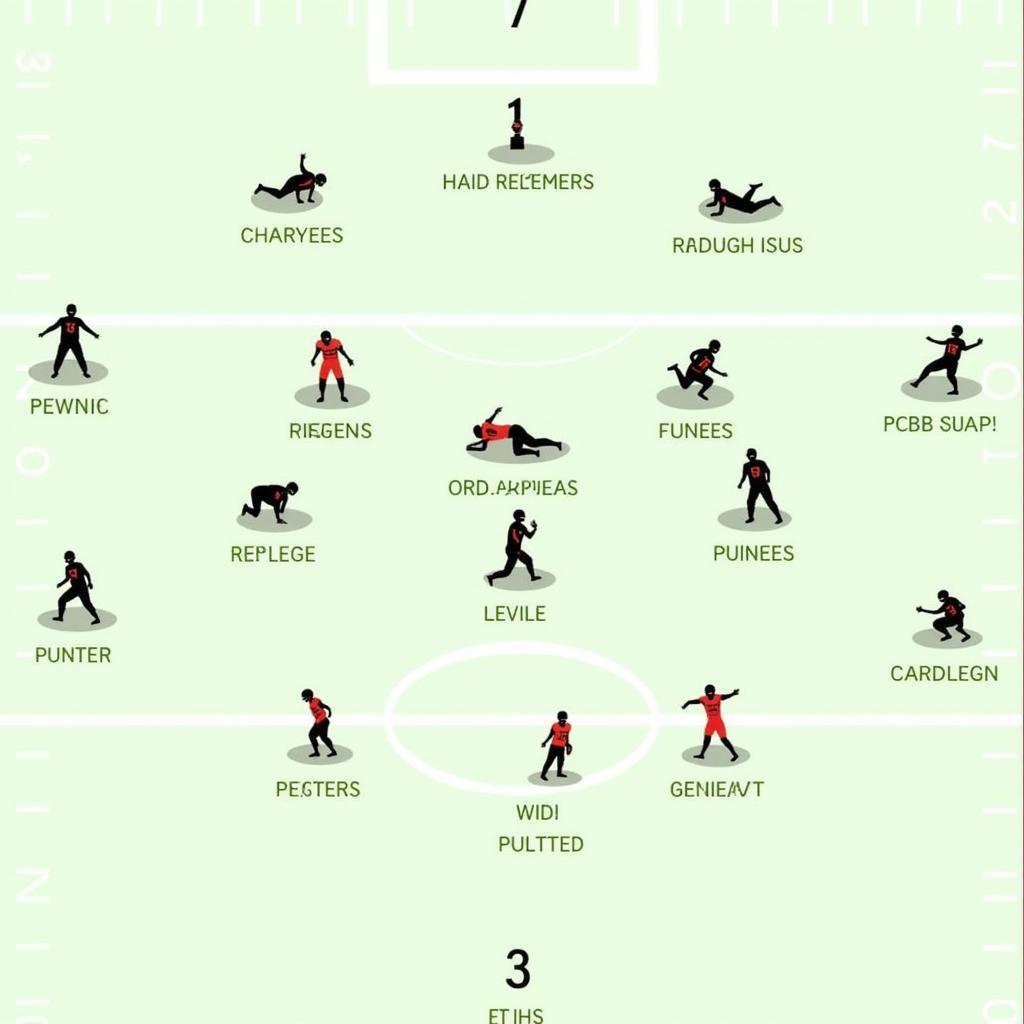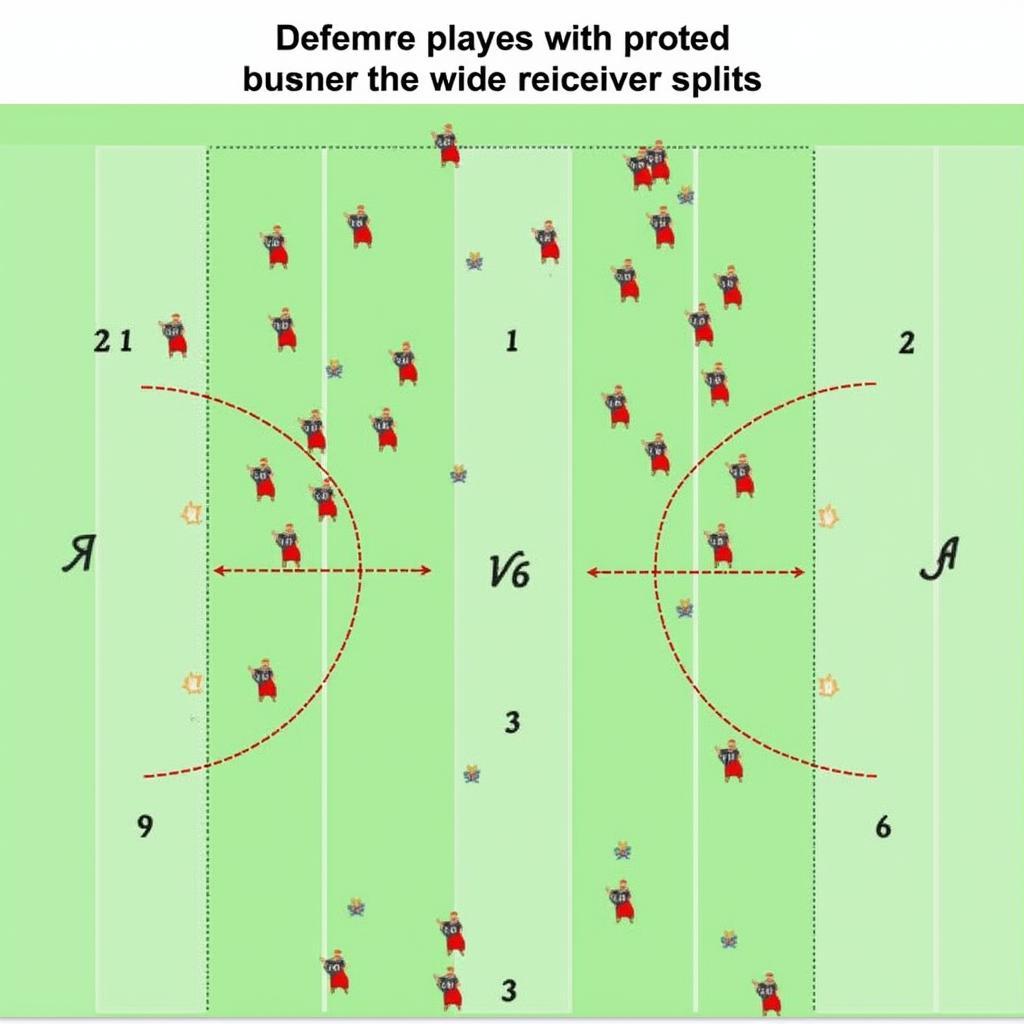The spread formation in football is more than just a trendy offensive scheme; it’s a dynamic approach that has revolutionized the game. This playbook delves into the intricacies of the spread formation, exploring its strategic depth, tactical advantages, and its impact on both offensive and defensive philosophies.
Unpacking the Spread Formation: A Tactical Overview
At its core, the spread formation is about maximizing space. By deploying multiple wide receivers, typically three or more, the offense stretches the field horizontally, forcing the defense to cover more ground. This creates wider passing lanes for the quarterback and isolates receivers in one-on-one matchups, exploiting mismatches against slower defenders.
Advantages of the Spread Formation
The spread formation offers a plethora of benefits, making it a popular choice across various levels of football:
- Enhanced Passing Game: Spreading the field opens up passing lanes, allowing quarterbacks more time and space to find their targets.
- Run-Pass Balance: While often associated with a pass-heavy attack, the spread formation can also create running lanes for agile quarterbacks and running backs, keeping defenses guessing.
- Dictating Tempo: The spread formation allows offenses to control the pace of the game, pushing the tempo with quick passes or slowing it down with strategic runs.
Key Components of a Successful Spread Offense
Implementing the spread formation effectively requires more than just spreading out receivers. It demands a specific set of skills and tactical considerations:
- Mobile Quarterback: A quarterback with the ability to extend plays and make throws on the run is crucial in a spread offense.
- Versatile Receivers: Receivers who can win one-on-one matchups, create separation, and make plays after the catch are essential.
- Strong Offensive Line: While pass protection is paramount, the offensive line must also be adept at blocking in space for running plays.
Defending the Spread: Countering Offensive Firepower
Defending the spread formation presents its own set of challenges, demanding versatility and adaptability:
- Disciplined Coverage: Defensive backs need to maintain their assignments and avoid getting beat deep, as the spread offense thrives on exploiting coverage breakdowns.
- Effective Pass Rush: Generating pressure on the quarterback is crucial to disrupt the timing and rhythm of the spread offense.
- Tackling in Space: With receivers operating in the open field, sound tackling technique is paramount to prevent big plays after the catch.
 Football Spread Formation Diagram
Football Spread Formation Diagram
Variations of the Spread Formation
The beauty of the spread formation lies in its adaptability. Coaches constantly evolve and tweak the system, leading to numerous variations:
- Air Raid Offense: This pass-heavy system focuses on spreading the field vertically and horizontally, creating passing options at all levels.
- Run and Shoot Offense: This variation prioritizes a balanced attack, utilizing the spread formation to create running lanes for both quarterbacks and running backs.
- Pistol Formation: This formation features the quarterback in a shortened shotgun depth, allowing for quicker passing releases and improved run-pass option (RPO) plays.
 Defensive Strategies Against Spread Formation
Defensive Strategies Against Spread Formation
The Spread Formation: A Game Changer
The spread formation has undoubtedly left its mark on the game, influencing offensive and defensive strategies at all levels. Its emphasis on speed, space, and skill continues to shape the evolution of football.
FAQs about the Spread Formation
1. What are the main advantages of using the spread formation?
The spread formation offers several advantages, including enhanced passing game, improved run-pass balance, and the ability to dictate tempo.
2. What type of quarterback excels in a spread offense?
A mobile quarterback who can extend plays and make accurate throws on the run is ideal for a spread offense.
3. How can defenses effectively counter the spread formation?
Disciplined coverage, a strong pass rush, and sound tackling in space are crucial for defending the spread.
4. What are some variations of the spread formation?
Popular variations include the Air Raid offense, Run and Shoot offense, and the Pistol formation.
Need More Insight?
For further exploration into offensive and defensive strategies, check out our articles on:
Need personalized assistance or have more questions? Don’t hesitate to contact our 24/7 support team:
Phone: 0902476650
Email: [email protected]
Visit us: 139 Đ. Võ Văn Kiệt, Hoà Long, Bà Rịa, Bà Rịa – Vũng Tàu, Việt Nam.





